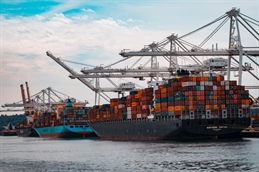
Shipping companies are expanding their intra-Asia operations to support the increasing demand within the region, boosted by e-commerce growth and moves to diversify production out of China.
Yang Ming announced several expansions to its intra-Asia network, citing expectations of “steady growth” in import and export trade in Southeast Asia.
The Taiwan-based shipper also noted the progress of negotiations under the Regional Comprehensive Economic Partnership (RCEP) framework as well as the tendency of global supply chains shifting toward Southeast Asia that could further boost demand within the region.
“With the progress in the RCEP negotiations, the steady economic growth in the Southeast Asia region is highly anticipated. In light of the development, Yang Ming continues to strengthen its coverage in the area,” the line said in a statement.
Yang Ming announced in August the expansion of its intra-Asia service by extending its Japan-Taiwan-South China Express to Malaysia, Singapore, and the Philippines starting October 21, 2020, to optimize its competitiveness between Japan, Taiwan, South China and Southeast Asia.
It also added newly-built 2,800 TEU ships to its fleet – 10 in total are planned until the second quarter of 2021 – to be deployed for intra-Asia operations.
“In response to the prosperity seen in the Southeast Asia market, this series of new buildings will become the main force for Yang Ming to strengthen its Intra-Asia services,” the line said.
Yang Ming said the ASEAN region, in particular, has already surpassed the EU and the US and has been the “largest trade partner of China” in recent years.
Intra-Asia service enhancements
OOCL said the coronavirus pandemic made it difficult to predict how trade will develop in the region with the lockdowns making “significant impact” on the market and economy.
Nonetheless, the Hong Kong-based container shipping and logistics company said it had introduced new products and service enhancements in its intra-Asia operation.
“The industry saw overall trade volumes in the first half of 2020 drop when compared to the same period last year, largely because of the impact from the pandemic on the global economy. As such, this level of uncertainty and how quickly things can change on such a scale makes growth forecasting very challenging,” an OOCL spokesperson told Asia Cargo News.
“[But] we are always exploring opportunities to expand our network and to provide competitive services. In the past few months, OOCL announced several new products and service enhancements in the intra-Asia trade, including those for Southeast Asia and India, and we will continue to keep watch of the evolving needs of the market and explore potential opportunities for growth,” the spokesperson added.
The shipping company mirrored an industry-wide slump in volumes during the first half compared to year-ago levels. OOCL reported, however, that its revenue was up 5.6% for its intra-Asia/Australasia lane during the period, as revenue per TEU also rose by 12%.
“Moving forward, we will be keeping a close eye on how governments formulate policies to control the spread of the virus, including those from the RCEP discussions that may help stimulate trade growth,” OOCL said.
Meanwhile, MSC also revamped its intra-Asia service amid growing trade between China and the ASEAN.
The Swiss shipping line updated four of its existing intra-Asia services last July and launched a new Southeast Asia loop to link Tanjung Pelepas (Malaysia), Singapore, Jakarta, Yantian, Kaohsiung, Manila, Vung Tau (Vietnam) and Laem Chabang (Thailand).
“Customers are showing increasing demand for new services to move cargo between key locations in Asia,” MSC said in a statement. “These enhancements to our intra-Asia network offer direct connections and competitive transit times for long-haul cargo from Greater China and Southeast Asia, as well as comprehensive port coverage between Indonesia, South China, Taiwan, Philippines, Vietnam and Thailand.”
The intra-Asia trade lane, dubbed as the world’s largest in terms of volumes shipped, accounts for about 33 million TEUs annually.
Other shipping companies have also introduced new intra-Asia services. Maersk expanded two of its intra-Asia routes to add new direct calls between Indonesia and China, and One Network Express (ONE) has increased direct sailings from China, with two new services launching this month to Indonesia, Thailand, Vietnam and the Philippines.
Return to growth following Covid-19 hit
Meanwhile, BIMCO chief shipping analyst Peter Sand said the intra-Asia trade lane was the first to manifest signs of recovery despite suffering an early hit from the Covid-19 pandemic.
Data from the Container Trades Statistics showed the lane recording a 1% volumes growth in June, making it the only region to show any expansion for the period.
Sand said intra-Asia has shown resilience amid the recent slowdown and that the region stands to benefit from moves to diversify supply chains.
“There is something of a decoupling between intra-Asia and the rest of the world. This is something to watch out for in terms of changes to global supply chains,” he said during a webinar.
“What we have seen from the outbreak of the trade war in 2018 is changing patterns of imports to the US from Asia, where a number of goods have shifted production from China.”
He noted, however, that even without “external forces,” the intra-Asia trade would continue to grow.
“Asia has seen a rapid increase in economic activity, that had seen the region grow at a much higher rate than in the rest of the world in the past 10 years,” Sand said. “There is higher demand generated internally in the region. This is a market with more than 4 billion people working and consuming.”
By Charlee C. Delavin
Asia Cargo News | Hong Kong




